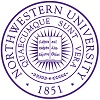Job Description
The course focuses on the political, social, and intellectual history of the central Islamic lands (Egypt, the Fertile Crescent, the Arabian Peninsula, Iran, Central Asia and Anatolia) up until c. 1800, and differs from analogous MPhil courses at other universities in the significance it places on language instruction in classical Arabic, Persian and Turkish, and the study of primary sources.
If you are already capable of carrying out research in one of these languages, you will be strongly encouraged to take up a second. Instruction and supervision are carried out by several members of the faculty’s teaching staff.
The first year of the course is devoted to intensive language instruction, six to eight hours per week. During the first year, students also attend weekly lectures on pre-modern Islamic history and on the main genres of Islamic religious writing. These lectures are accompanied by a weekly graduate seminar devoted to discussing important research literature and student essays. An induction meeting is normally scheduled for new students during noughth week of Michaelmas Term, ie, the week before the beginning of full term.
You will normally spend the summer between years one and two in the Middle East for language study and/or research connected with thesis work.
The second year is devoted to continuing language instruction, more focused work on two elective papers, and a thesis. Available elective papers may vary from year to year, but topics that are frequently taught include the Qur’an and Qur’anic exegesis, hadith, Islamic law, Sufism, Islamic theology, Arabic philosophy, conversion to Islam in the Middle Ages, and Islamic art and architecture. Past students have also taken options in Arabic and Persian literature. Elective papers normally involve a weekly meeting of two hours devoted to the reading and primary sources, student presentations, informal lecturing, and the discussion of student essays. Students spend a significant amount of time preparing for these meetings by working through primary texts, reading secondary literature, and writing essays.


